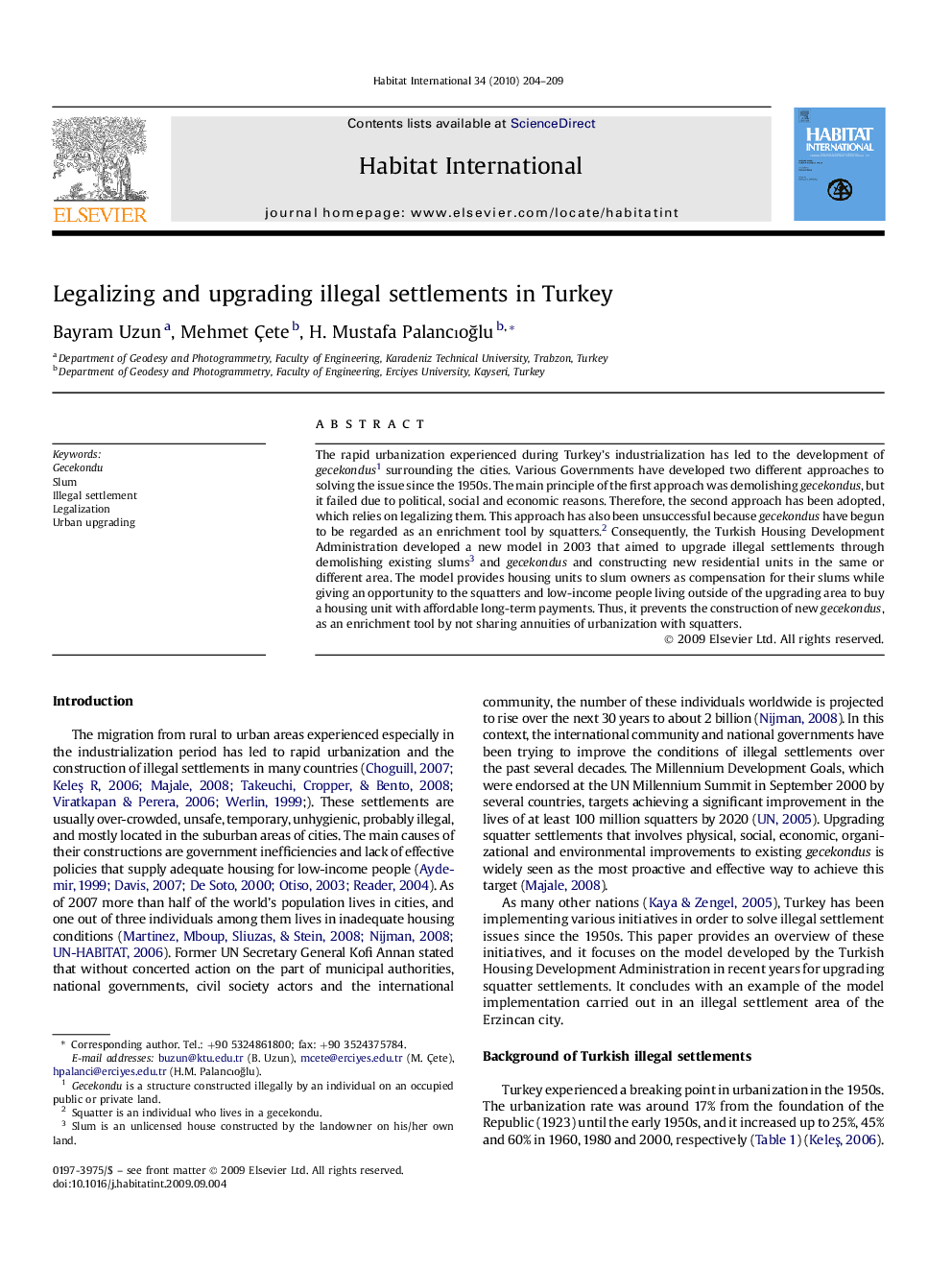| Article ID | Journal | Published Year | Pages | File Type |
|---|---|---|---|---|
| 1048191 | Habitat International | 2010 | 6 Pages |
The rapid urbanization experienced during Turkey's industrialization has led to the development of gecekondus 1 surrounding the cities. Various Governments have developed two different approaches to solving the issue since the 1950s. The main principle of the first approach was demolishing gecekondus, but it failed due to political, social and economic reasons. Therefore, the second approach has been adopted, which relies on legalizing them. This approach has also been unsuccessful because gecekondus have begun to be regarded as an enrichment tool by squatters. 2 Consequently, the Turkish Housing Development Administration developed a new model in 2003 that aimed to upgrade illegal settlements through demolishing existing slums3 and gecekondus and constructing new residential units in the same or different area. The model provides housing units to slum owners as compensation for their slums while giving an opportunity to the squatters and low-income people living outside of the upgrading area to buy a housing unit with affordable long-term payments. Thus, it prevents the construction of new gecekondus, as an enrichment tool by not sharing annuities of urbanization with squatters.
